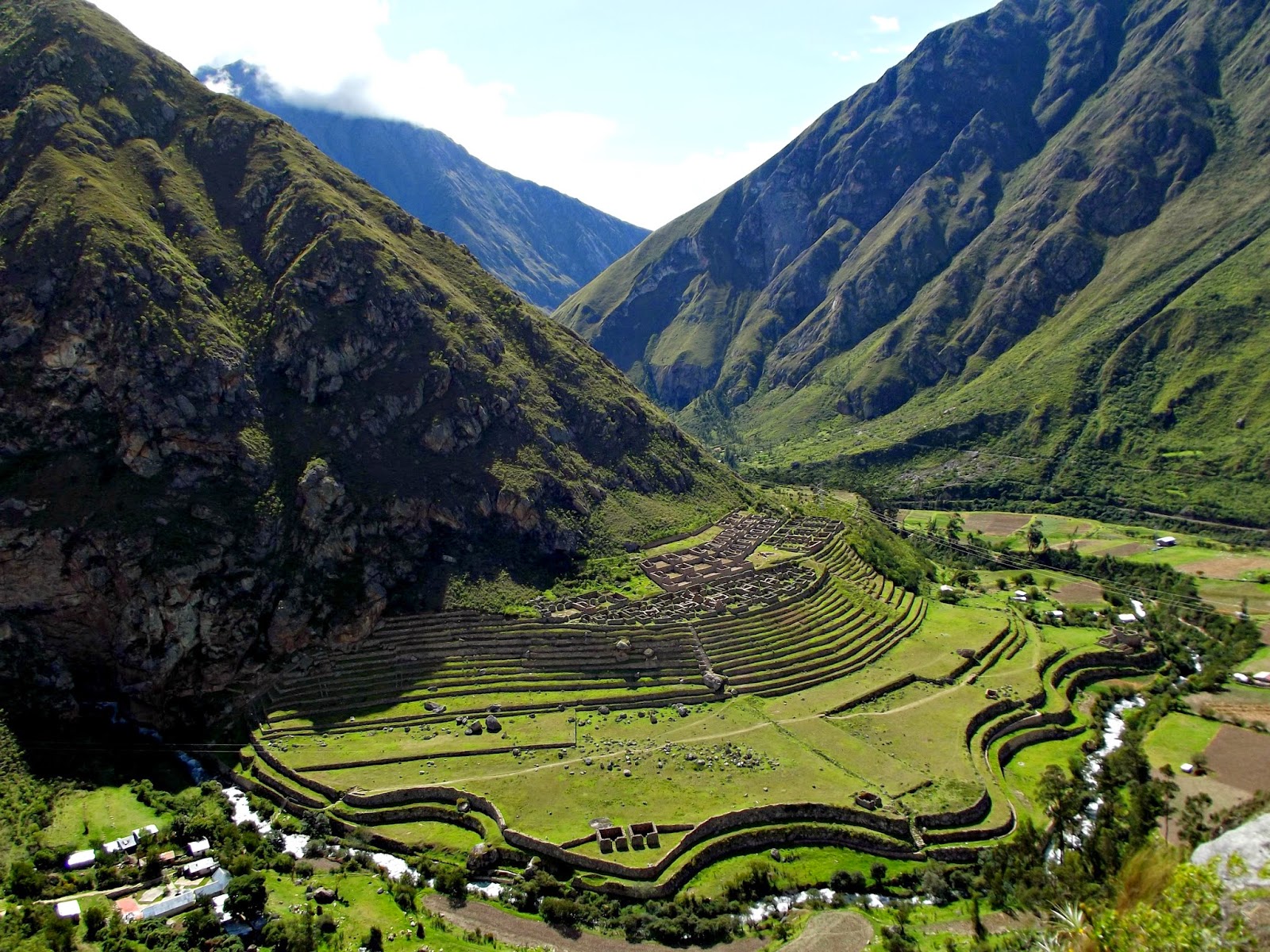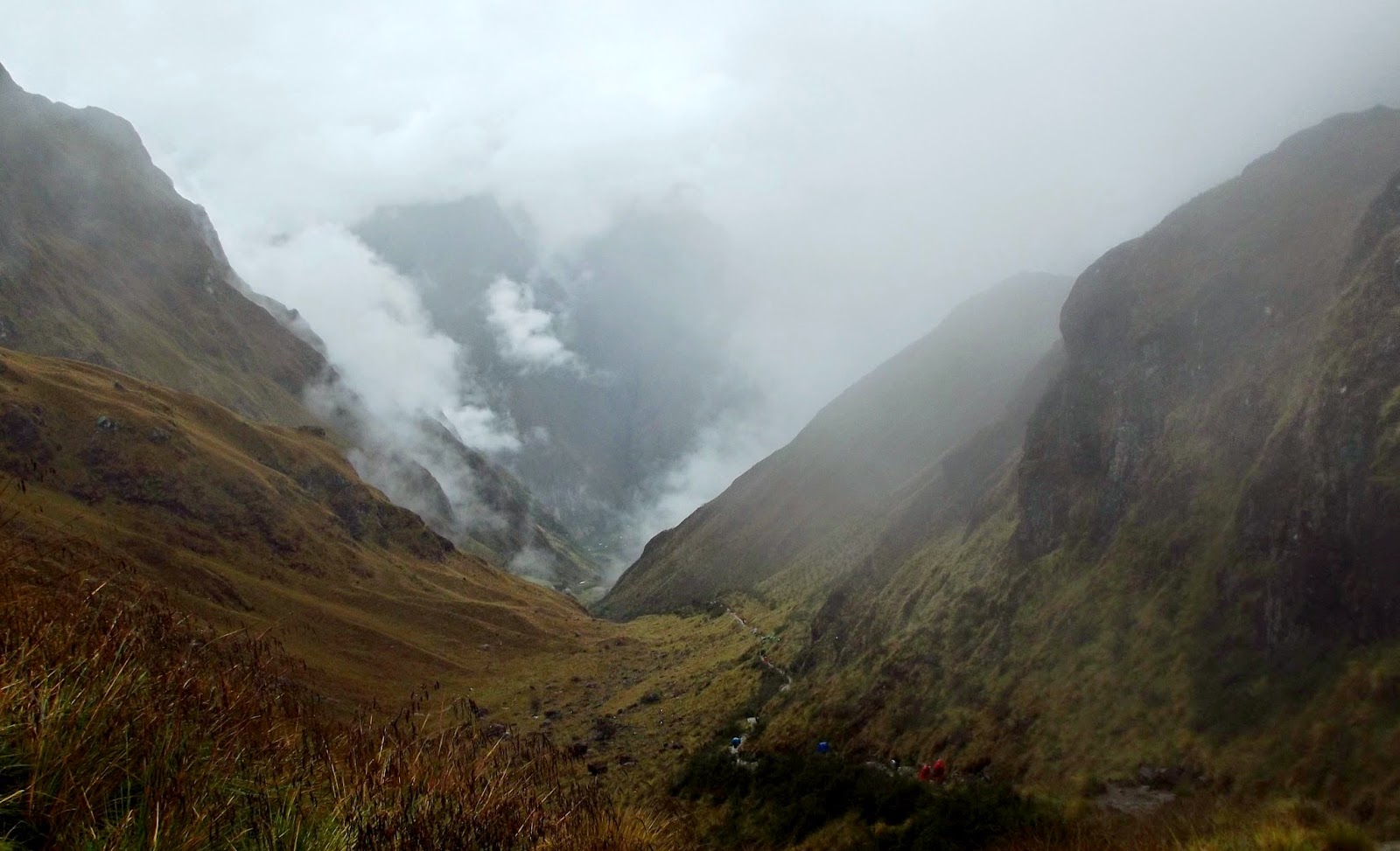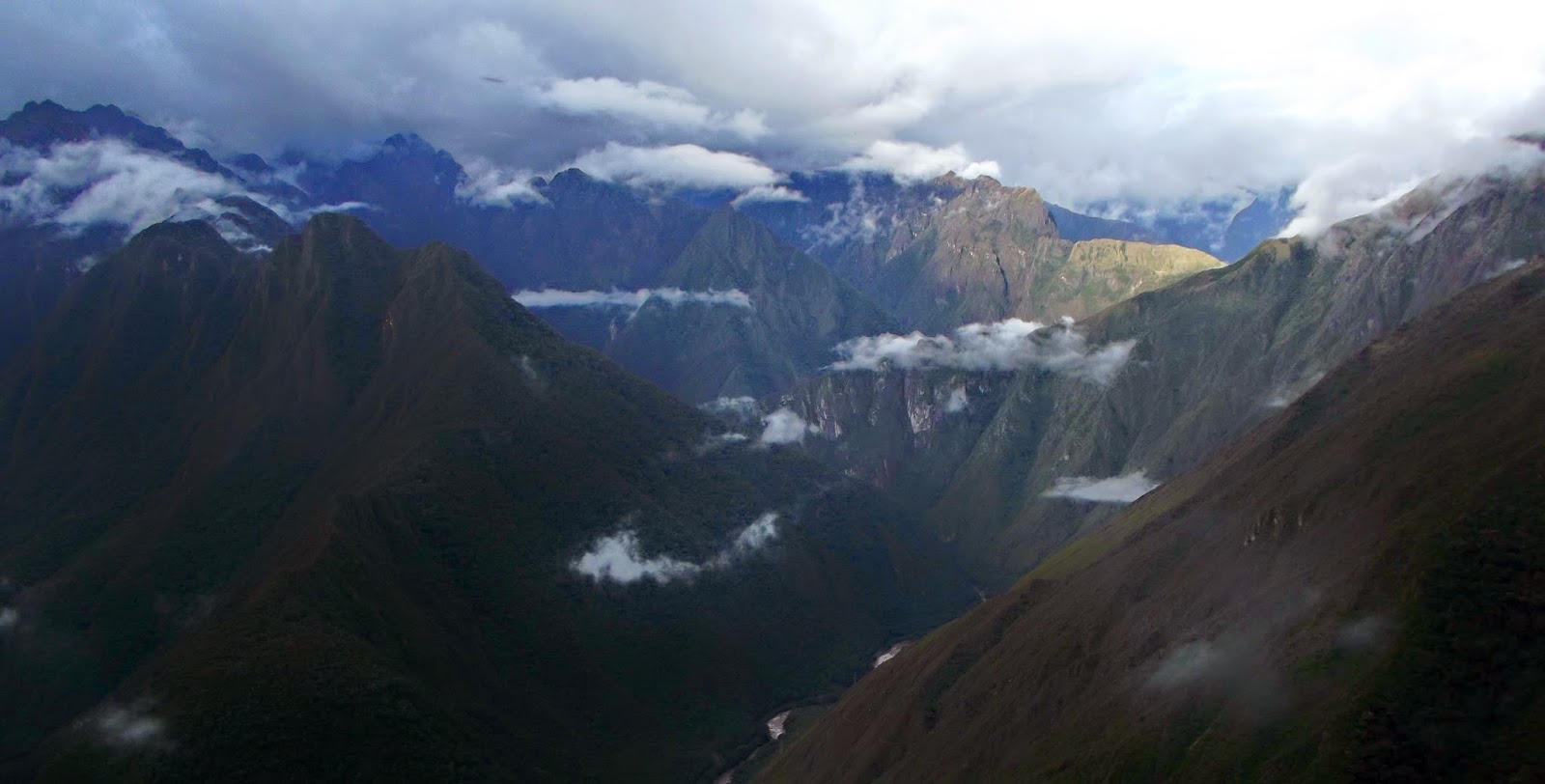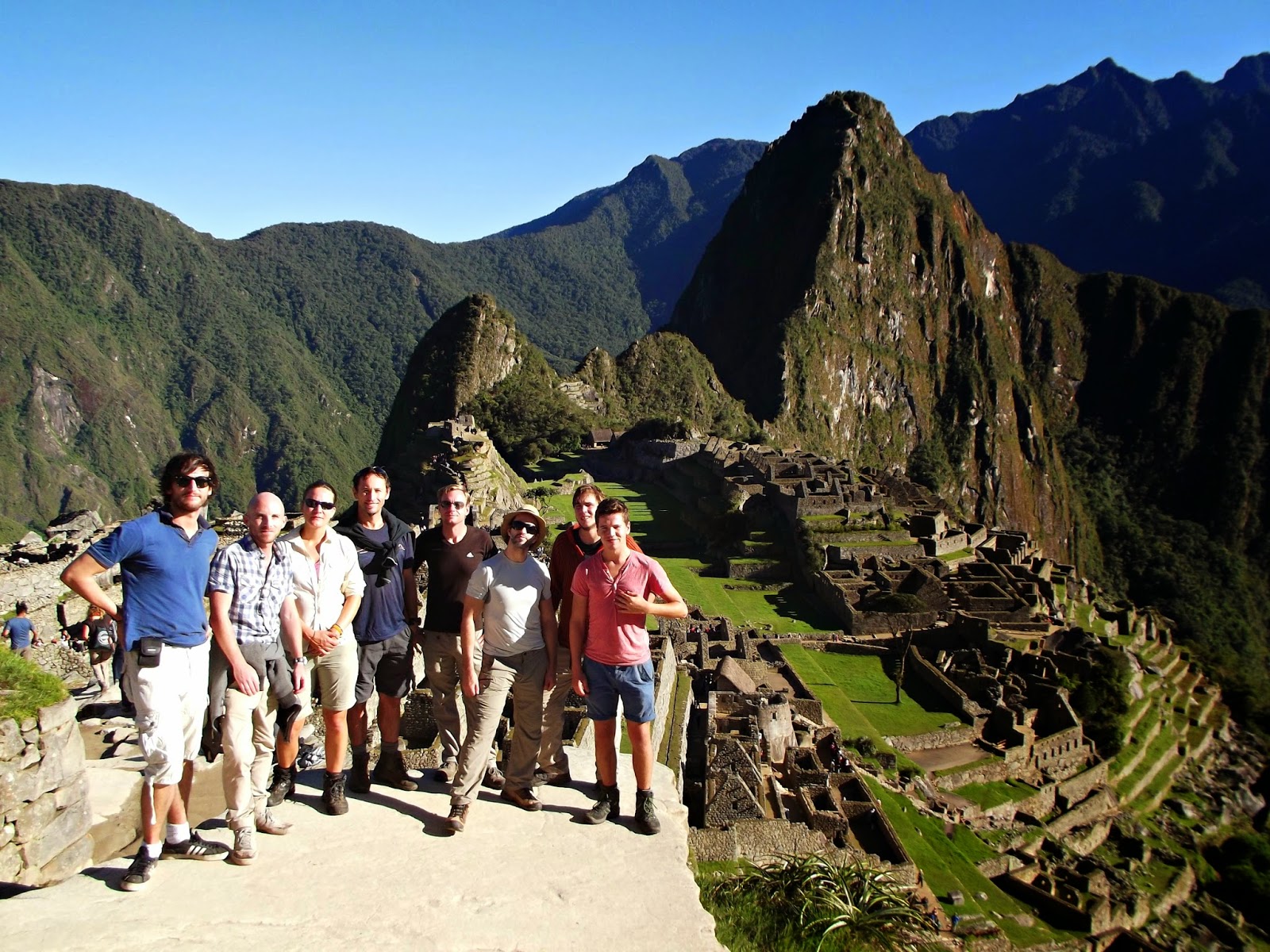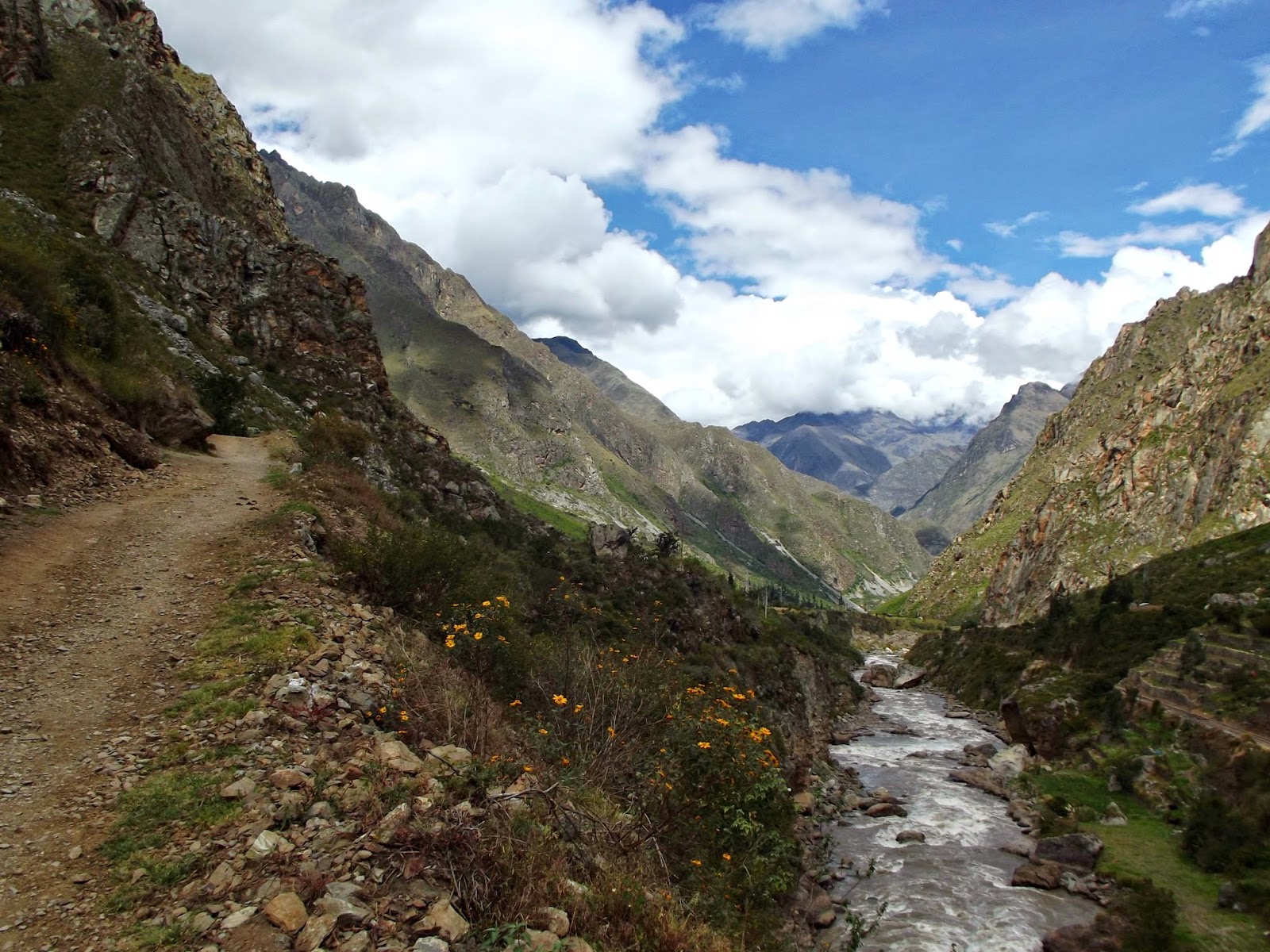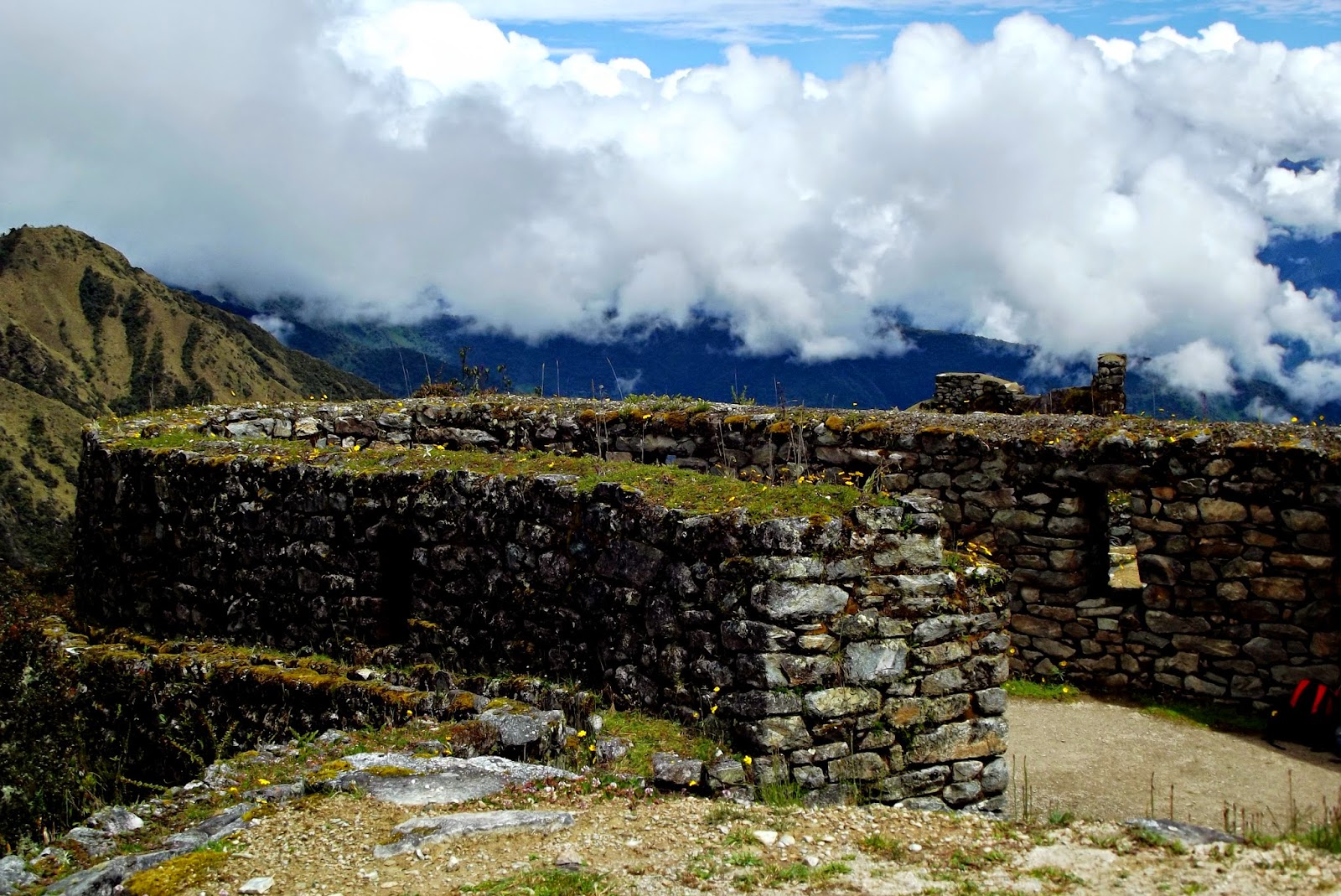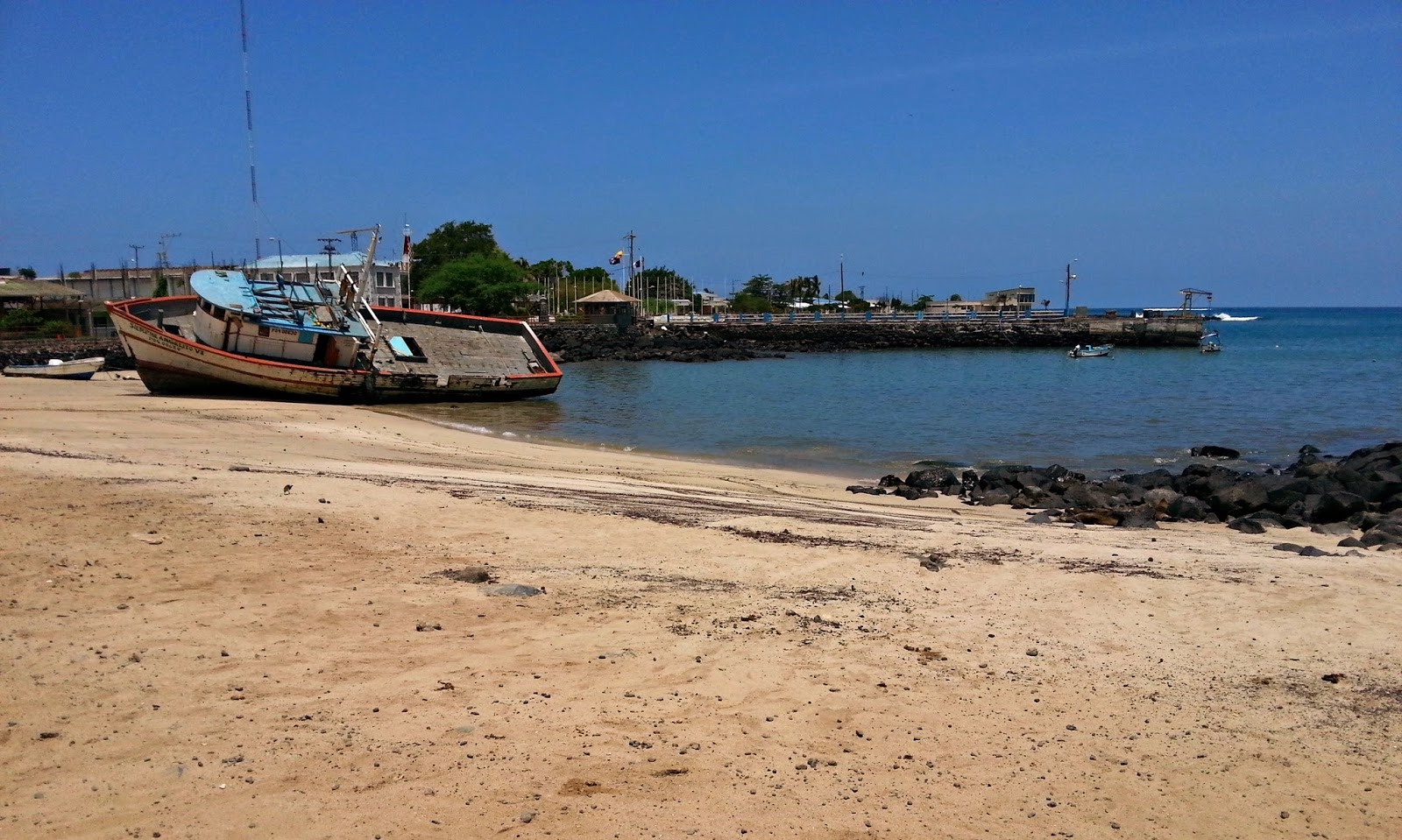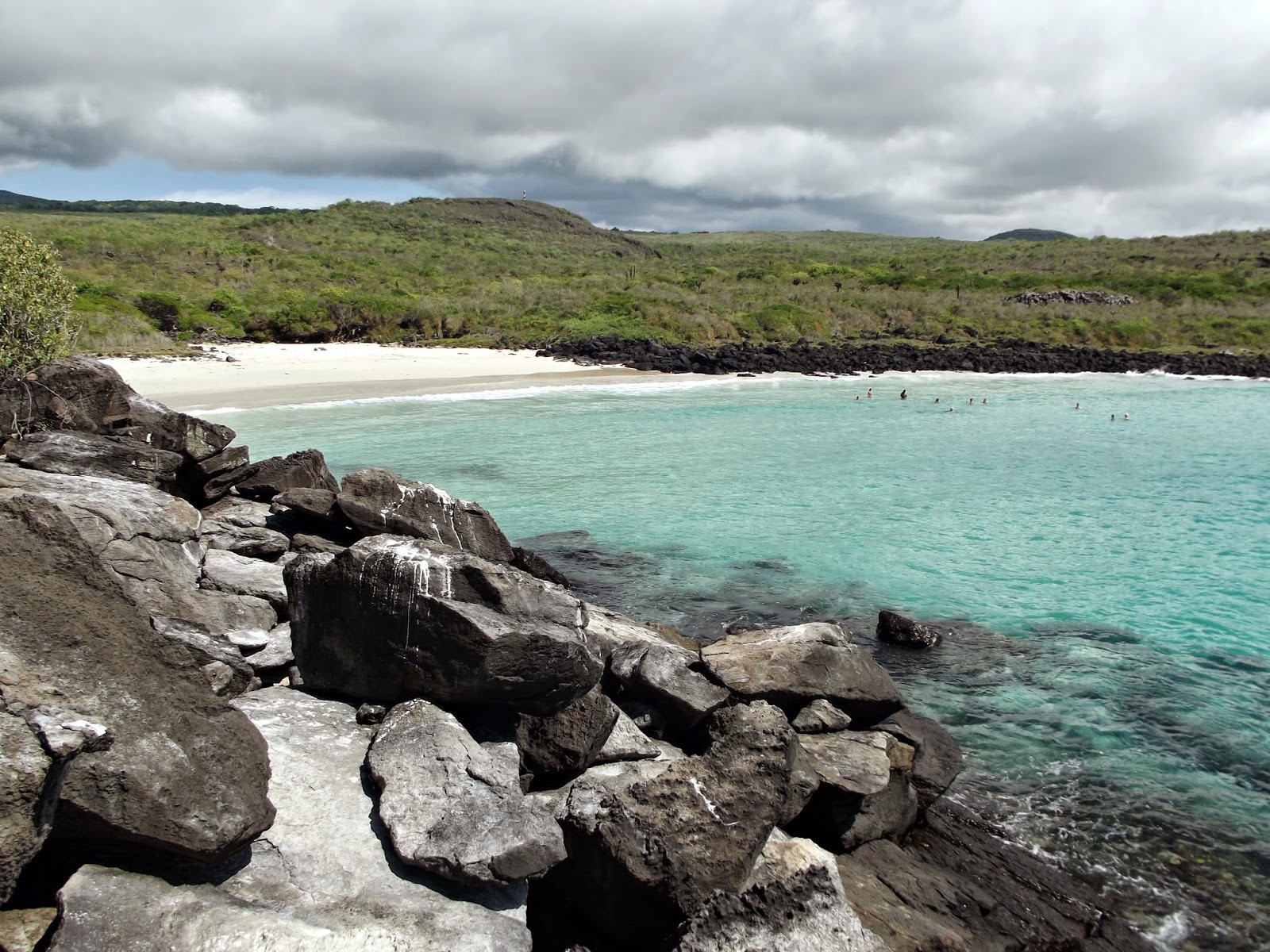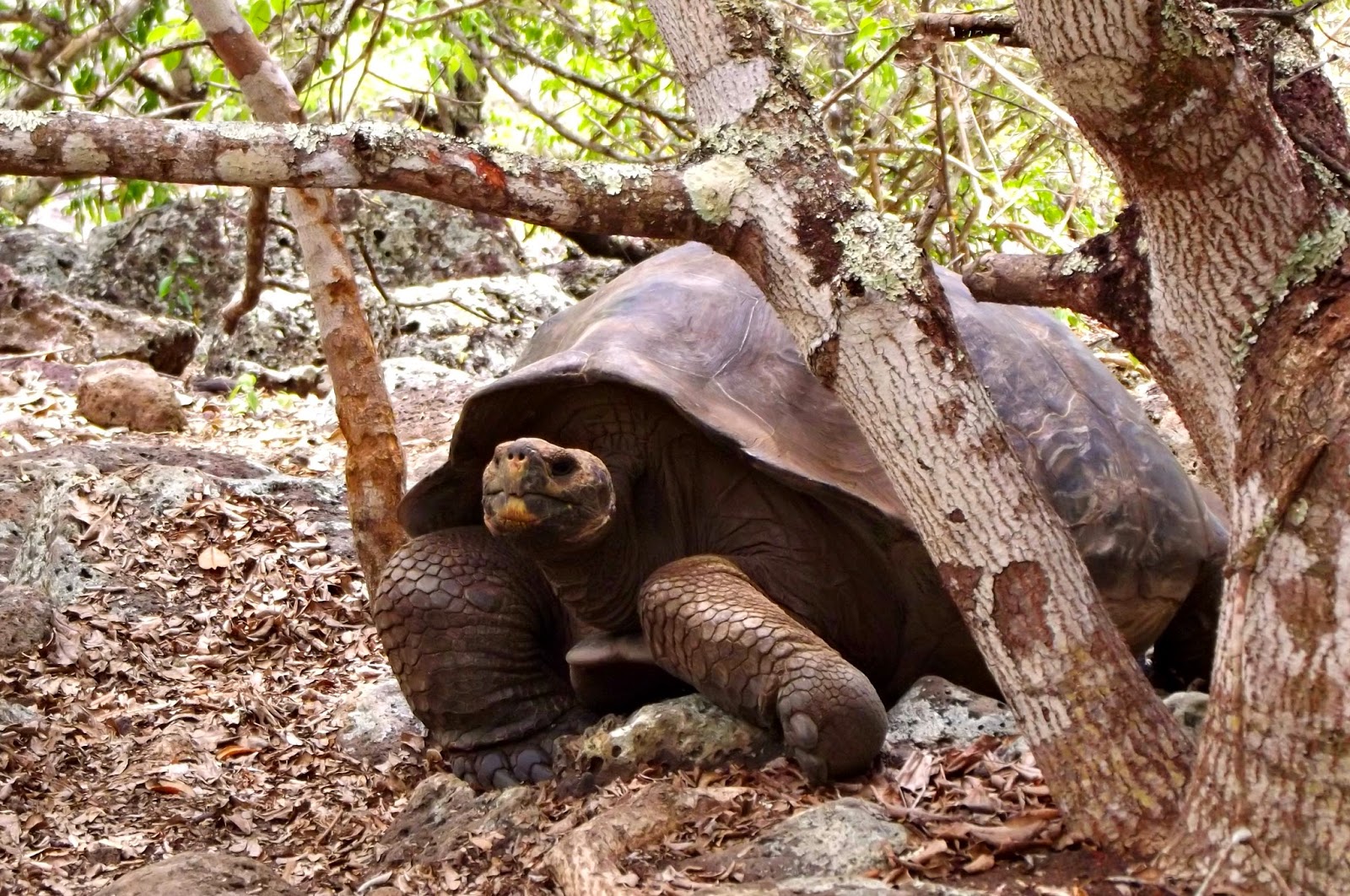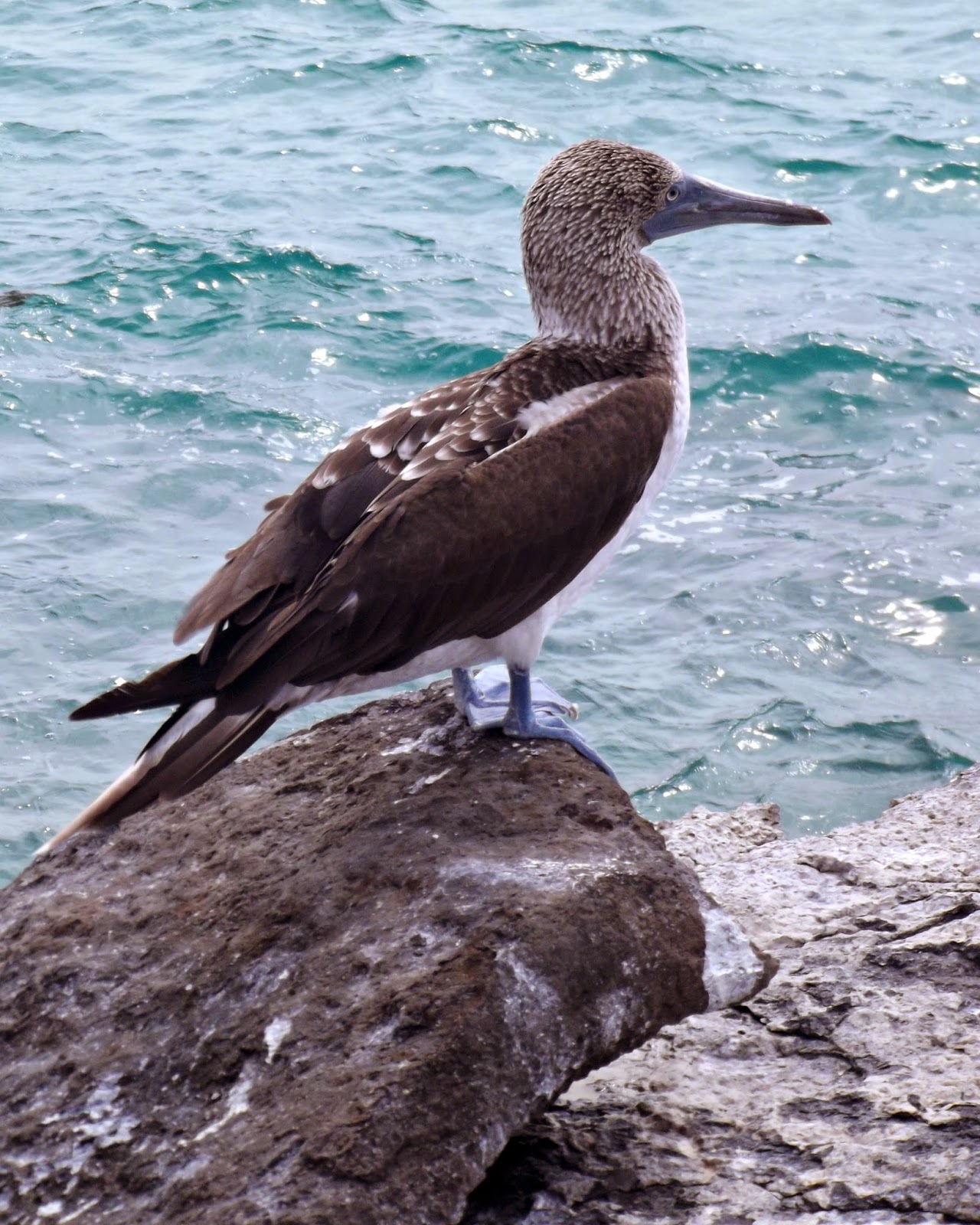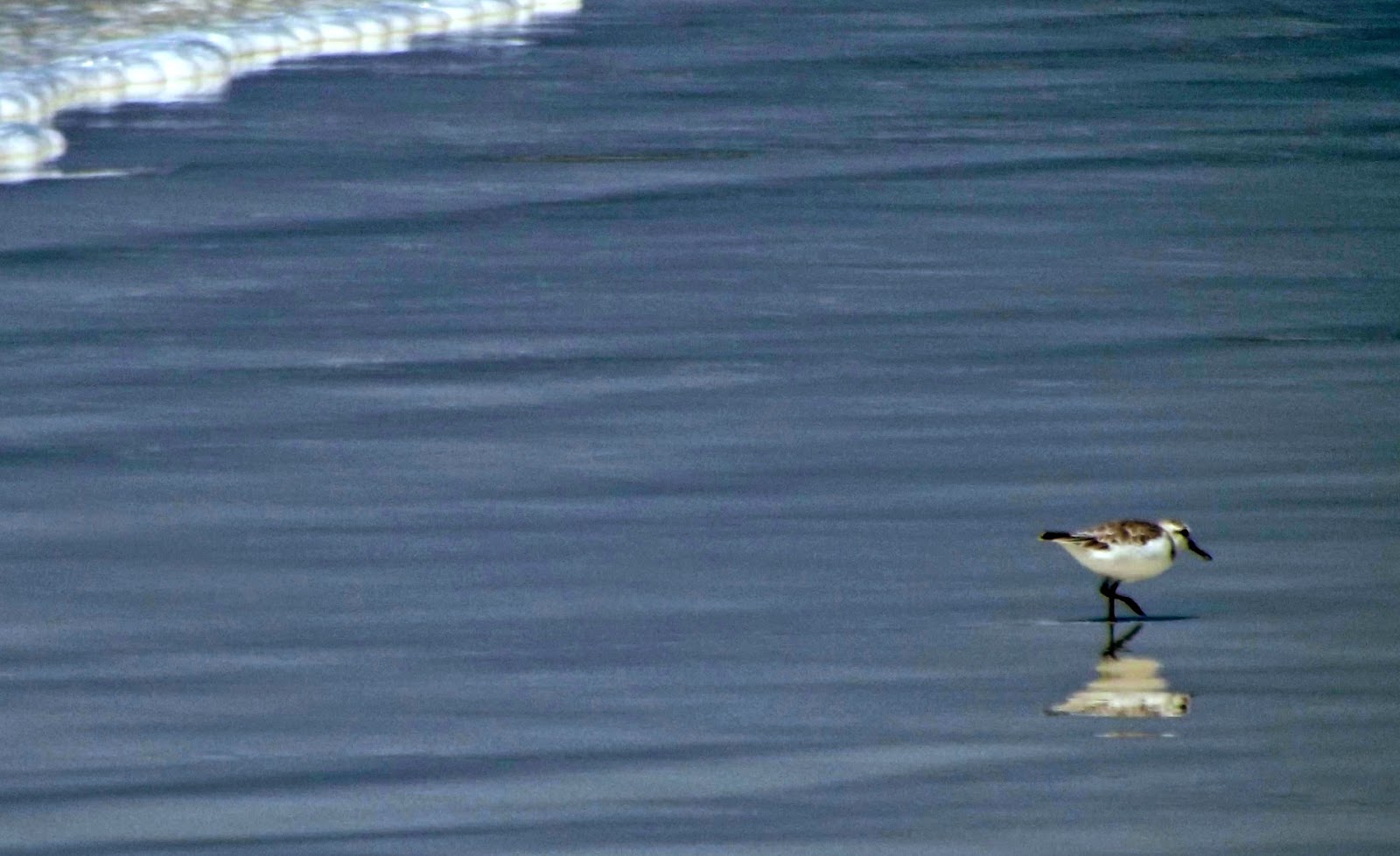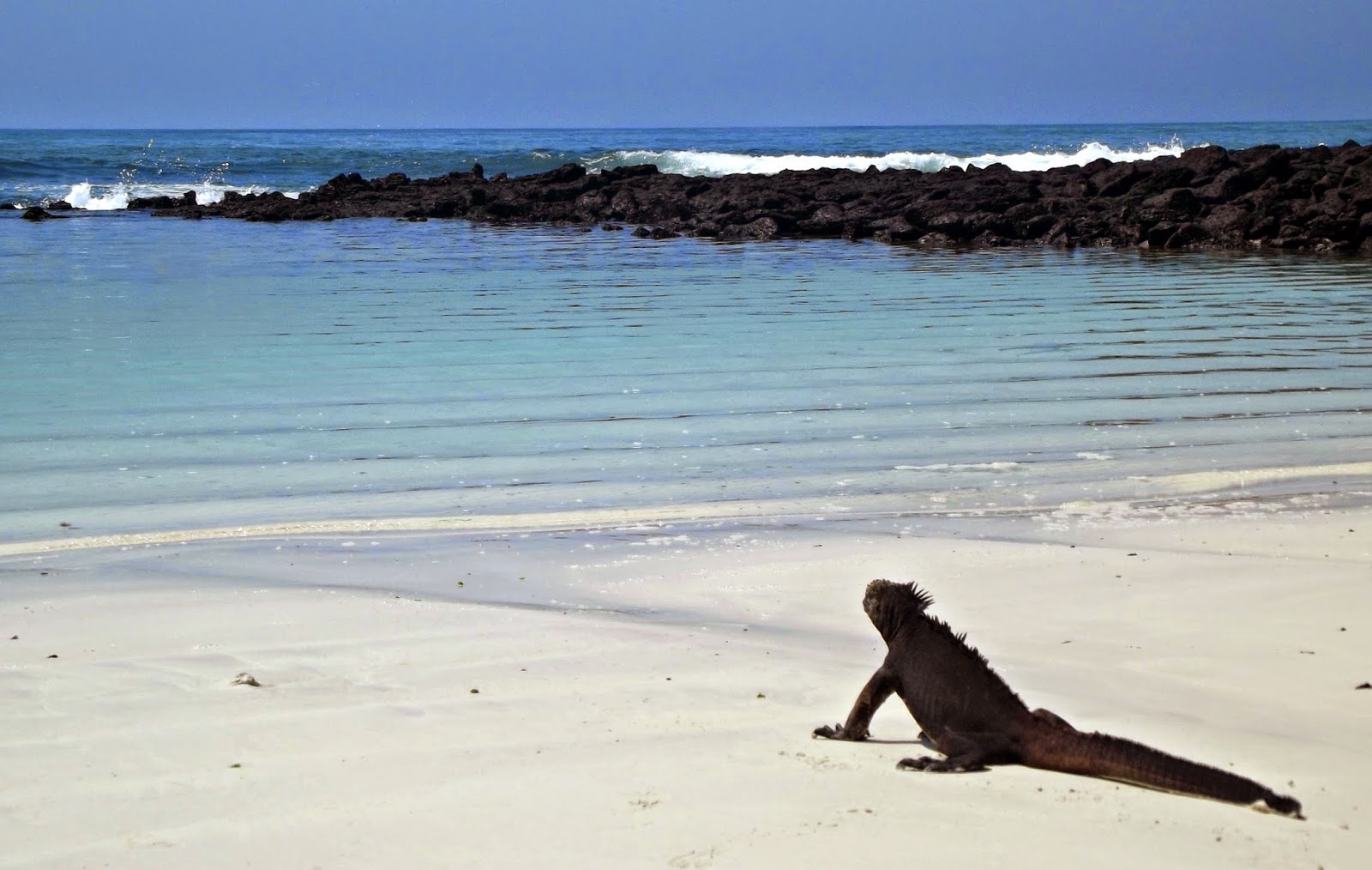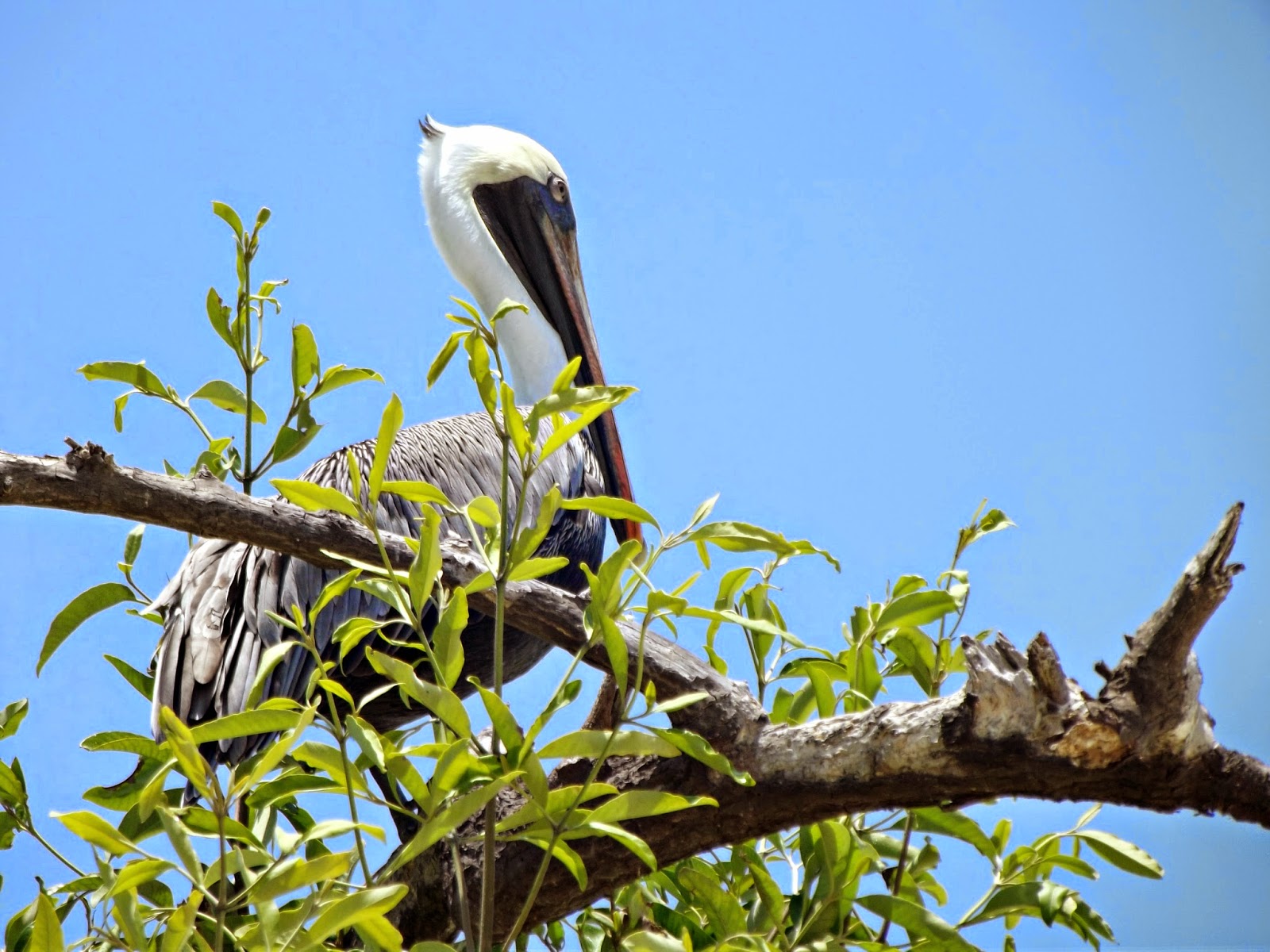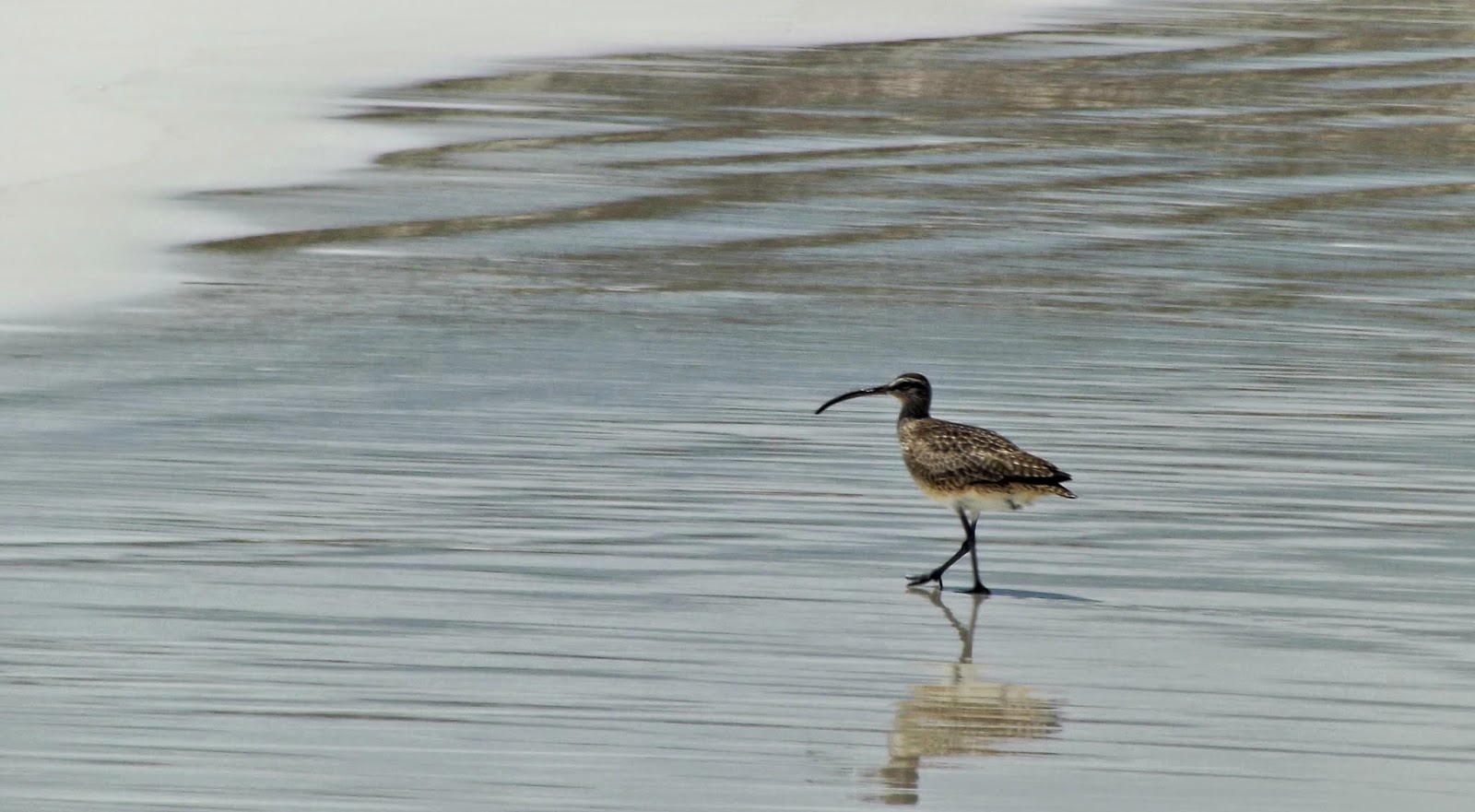After three weeks of chopping blackberry thickets, moving dirt, and clearing paths, I decided to spend my last week in the Galapagos going island-hopping. One of the many misconceptions I had about the Galapagos before I arrived was that it is incredibly expensive to visit the islands and that the only real way to do it is by multi-day tour boat. Maybe I shouldn't help keep the number of tourists in the islands down by reinforcing that idea, but the fact is, if you know what you're doing, going to the Galapagos can be only slightly more expensive than a trip to the Caribbean from the US. And since I had some of the best SCUBA dives of my life there, as well as fantastic beach time, I don't think it will be too long before I'm heading back there for a vacation - this time without the farm work. So, in the interests of making everyone's lives a little wilder, here is my overview of the islands, and tips for getting there without breaking the bank.
 |
| A blue footed booby, looking a little outraged |
 |
| Los Tuneles, on Isabela |
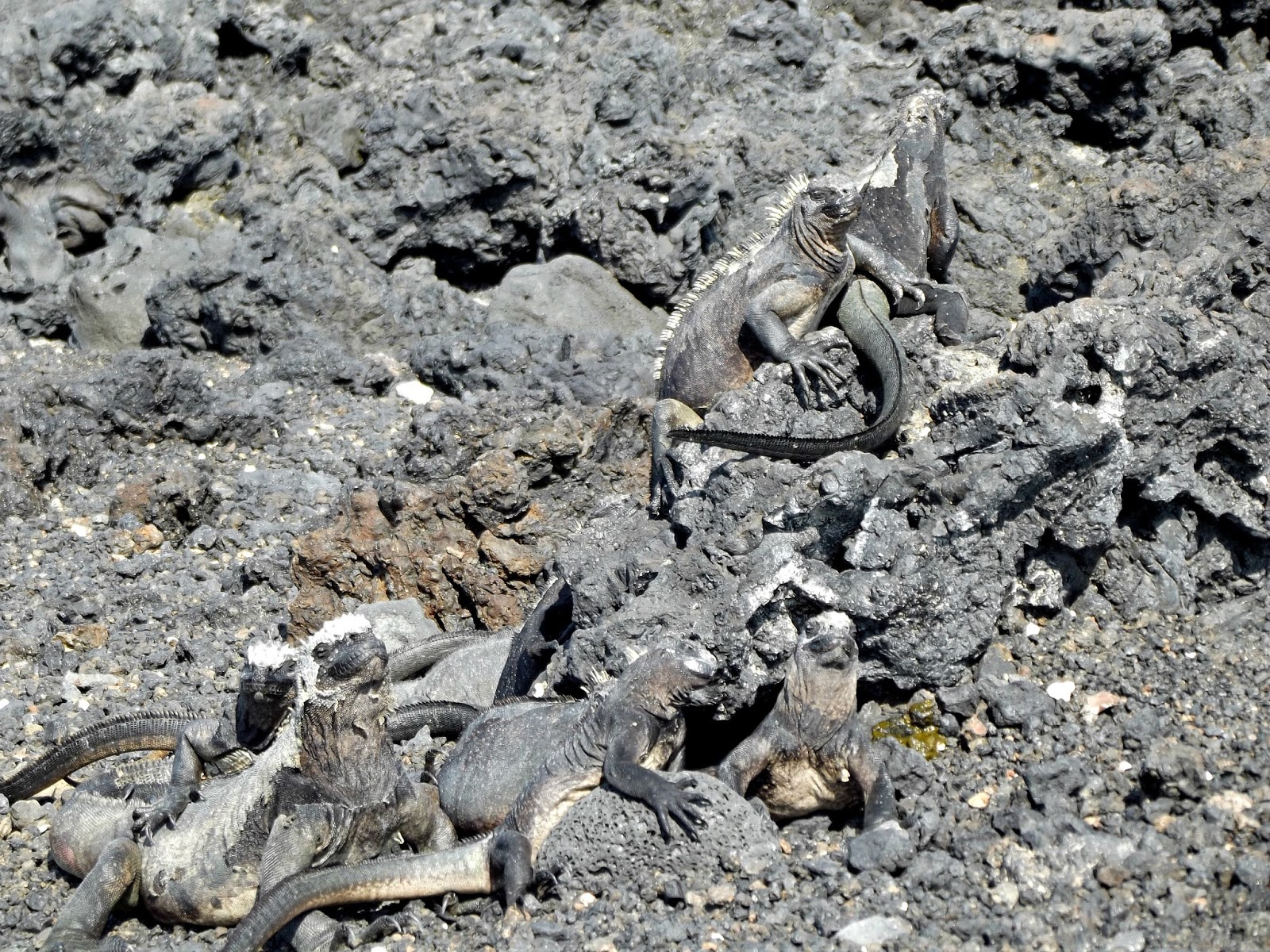 |
| If a group of sheep are called a flock, should a group of iguanas be called a pile? |
Getting to the Galapagos is probably the most expensive part of the trip, since you will need to either get to Quito or Guyaquil Ecuador first, and then take another flight to one of the two airports in the islands. Since it's probably impossible to time all the flights concurrently, you might as well add at least a day or two on the mainland first, just to get a hint of the local culture. I didn't get to Guyaquil, so I can't speak to it's charms, but Quito has enough to keep a visitor occupied for a day or two, but any more than that I would start thinking of side trips. Last I checked, flights from the mainland to Galapagos were almost as much as flights from the US to Ecuador, so there will be some sticker shock from that purchase (especially adding in the $100 Galapagos visitors' fee, paid at the airport), but once you're over that hill, the rest of the costs are much more reasonable.
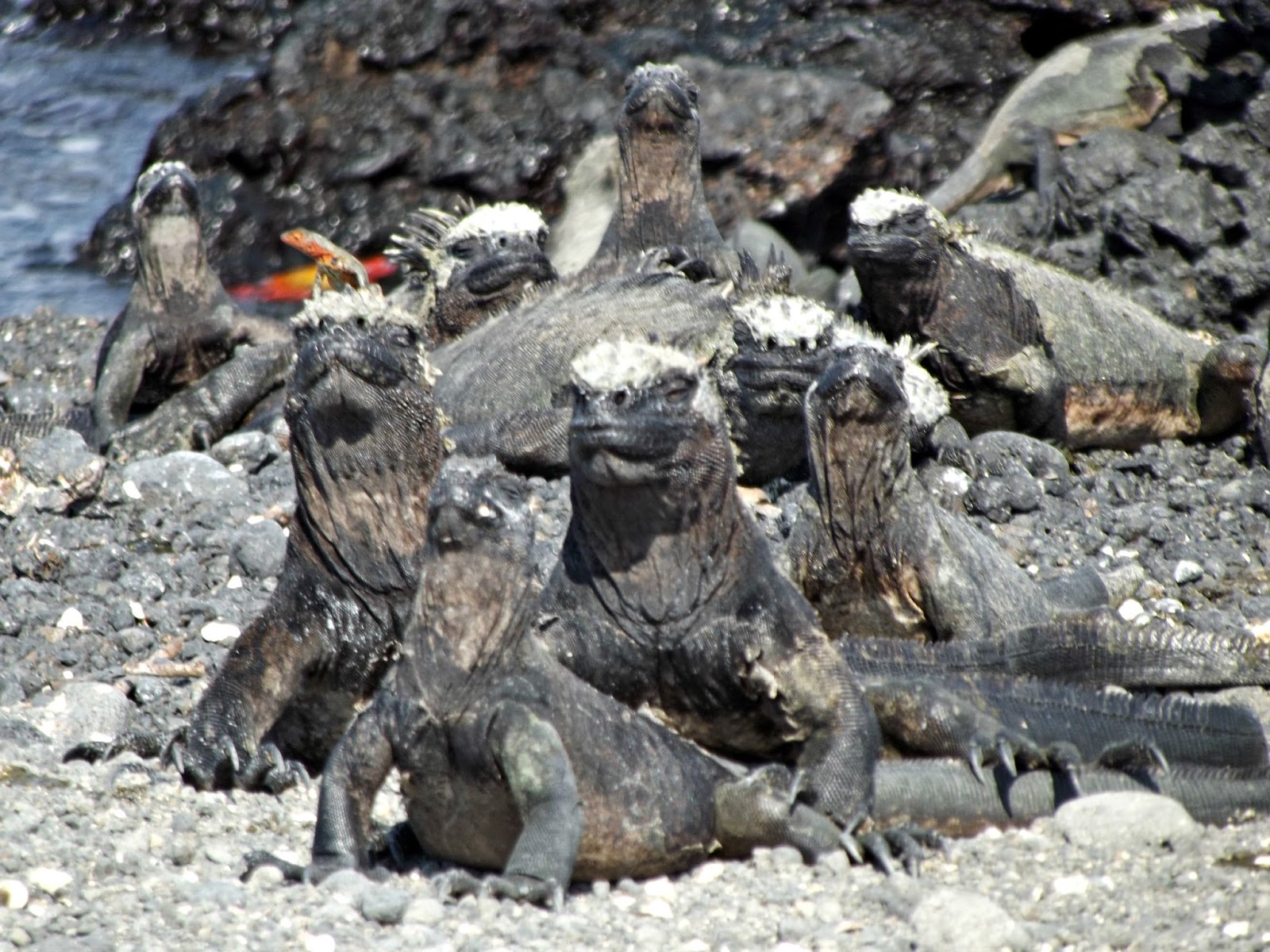 |
| I love the little red lava lizard that is using the iguana's head as a perch |
 |
| Not a great photo I know, but I spent a long time trying to get a shot of this penguin and this was the best I got |
 |
| It seems wrong somehow to find penguins and flamingos on the same island, but that's the Galapagos for you |
 |
| At Los Tuneles, you don't even have to snorkel to see the turtles, you can just watch them swim by from the banks |
My last post covered the time working with Jatun Satcha on San Cristobal Island, the easternmost island with a sizable population. San Cristobal (which has an accent over the 'o', by the way, but I'm not going to deal with putting in the accent marks or tildas here) is my second-favorite of the three inhabited islands, with one of the two airports, a nice sleepy town, and several fantastic beaches. It doesn't have the same level of wildlife or natural attractions that some of the other islands do, but you can still sit with the sea lions on the boardwalk and go snorkeling with sea turtles every day of the week if you like. If you were to fly to San Cristobal first, I think you could easily plan to spend three days there before thinking of moving on. During the low season, you can find private rooms anywhere from $20 a night for a basic backpacker room to $150 a night in one of the fancy resorts - this price range, by the way, was pretty consistent across all three islands. Simiarly, meals ranged from $3.50 for a set dinner of soup, rice and chicken, and a juice, to $15 for more elegant fare (I ate a lot of chicken and rice in the Galapagos). For me, highlights of San Cristobal were SCUBA diving at Kicker Rock and seeing hammerhead sharks, Loberia Beach for snorkeling with sea lions and turtles, and the Galapaguera tortoise reserve for seeing tortoises in all their wrinkled, grumpy glory.
 |
| Another blue footed booby. Since they're pretty much the mascot of the Galapagos, you can never take too many photos of them, but we all tried |
 |
| Los Tuneles |
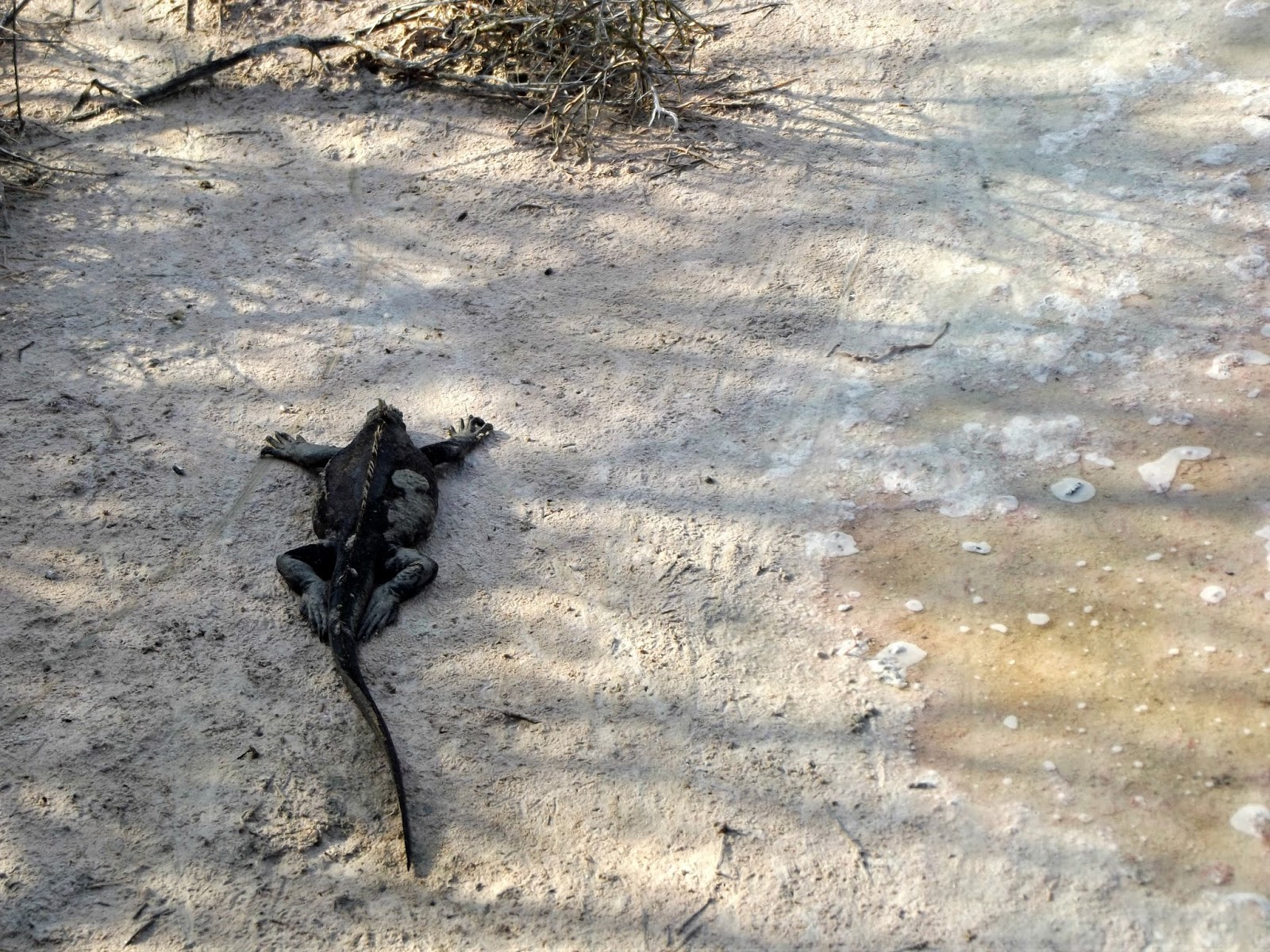 |
| If there were an Olympic event for basking in the sunshine, it would be a toss-up between cats and iguana for the gold medal |
 |
| Masked, or Nazca, boobies |
Moving west to the next major islands, you'll pay about $30 for a four-hour speedboat ride to Santa Cruz, which has the largest population in the Galapagos and serves as the main tourist hub, and feels like it. To me, Santa Cruz was just a little too much city for being in the Galapagos; it was more crowded, more tourists, and prices were a little higher... although I have to admit that I enjoyed getting good coffee and pizza again. If you were to start in Santa Cruz, I would recommend spending your first day going to the Charles Darwin center to see the tortoises and iguanas and going to Tortuga Beach, one of the nicest beaches I've ever been on, and then a couple more days organizing day trips to other smaller islands from Santa Cruz, since this is the best island to set these up. Unfortunately, I didn't do this, and so missed my chance to go to Floreana, one of the only other islands I wanted to see, but these day trips are offered everywhere on Santa Cruz and shouldn't cost more than $120-150 per person for a trip out to see and hike on one of the uninhabited islands. After that, pick either San Cristobal or Isabela island, hop on a speedboat, and get out of the "big city".
 |
| There are lots of birds on Isabela |
 |
| Lots and lots and lots of birds |
 |
| "Let me out of the tortoise jail!" |
I spent the most time on Isabela, the largest and westernmost inhabited island, and loved every minute of it. Islabela has that wonderful sleepy island town vibe that I love so much, with only a few hundred people near the port, sandy streets with "iguana crossing" signs, and spectacular scenery. Isabela has hikes up to volcano craters, SCUBA diving, snorkeling, and beaches perfect for pretending you are a basking iguana. It's quiet, laid-back, friendly, and hard to leave. Plus, in terms of marine wildlife, it's off the charts. One my first SCUBA dive in Isabela, I found myself thinking "Do I look at the two manta rays the guide is pointing out, the sea lion that's swimming up behind him, the hammerhead shark that just swam by me to the left, or the one to the right?" Naturally, I watched the sharks that were swimming behind me, can't be too careful. On the day trip to Los Tuneles, ancient lava tubes that are now half-submerged arches in the ocean, I snorkeled with sea turtles, white tip sharks, manta rays, penguins, sea horses, and of course sea lions, which is like several years worth of SCUBA diving in other places rolled up into one morning in the Galapagos. And yes, I even saw the iguanas crossing the road in front of their sign.




So, my bottom line for 7 days / 7 nights on Santa Cruz and Isabela, including meals, lodging, day tours, and transportation between islands was just a hair over $700, and $150 of that was for SCUBA diving. I consider that a pretty reasonable cost for seeing such incredible sights and finding places where the wildlife is more likely to ignore you than run away. So, on second thought, don't consider visiting the Galapagos for your next tropical island vacation... I want to keep it all to myself. But I will share pictures.
 |
| One last booby photo |
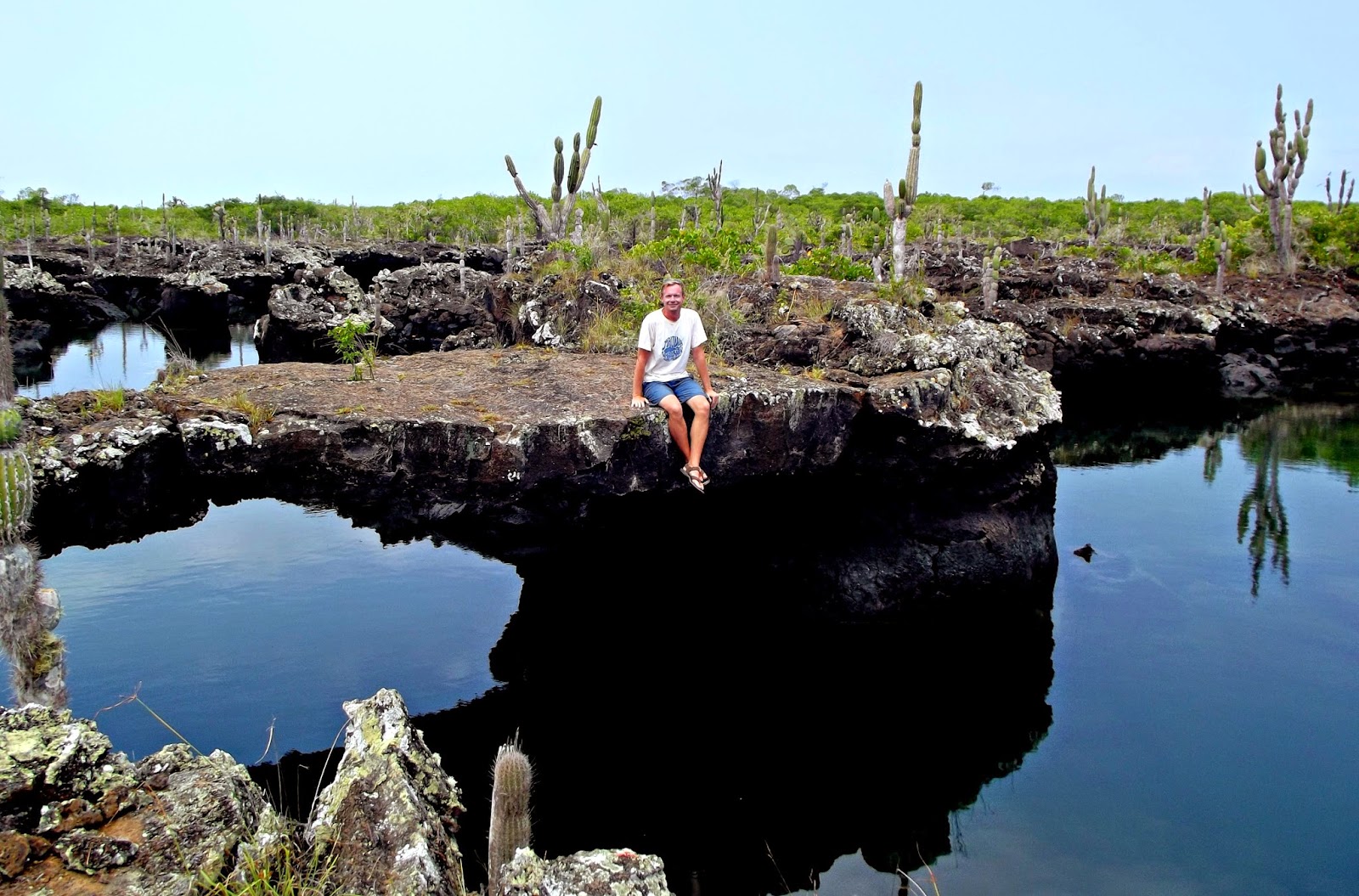 |
| And one last photo of Los Tuneles, and me enjoying them |
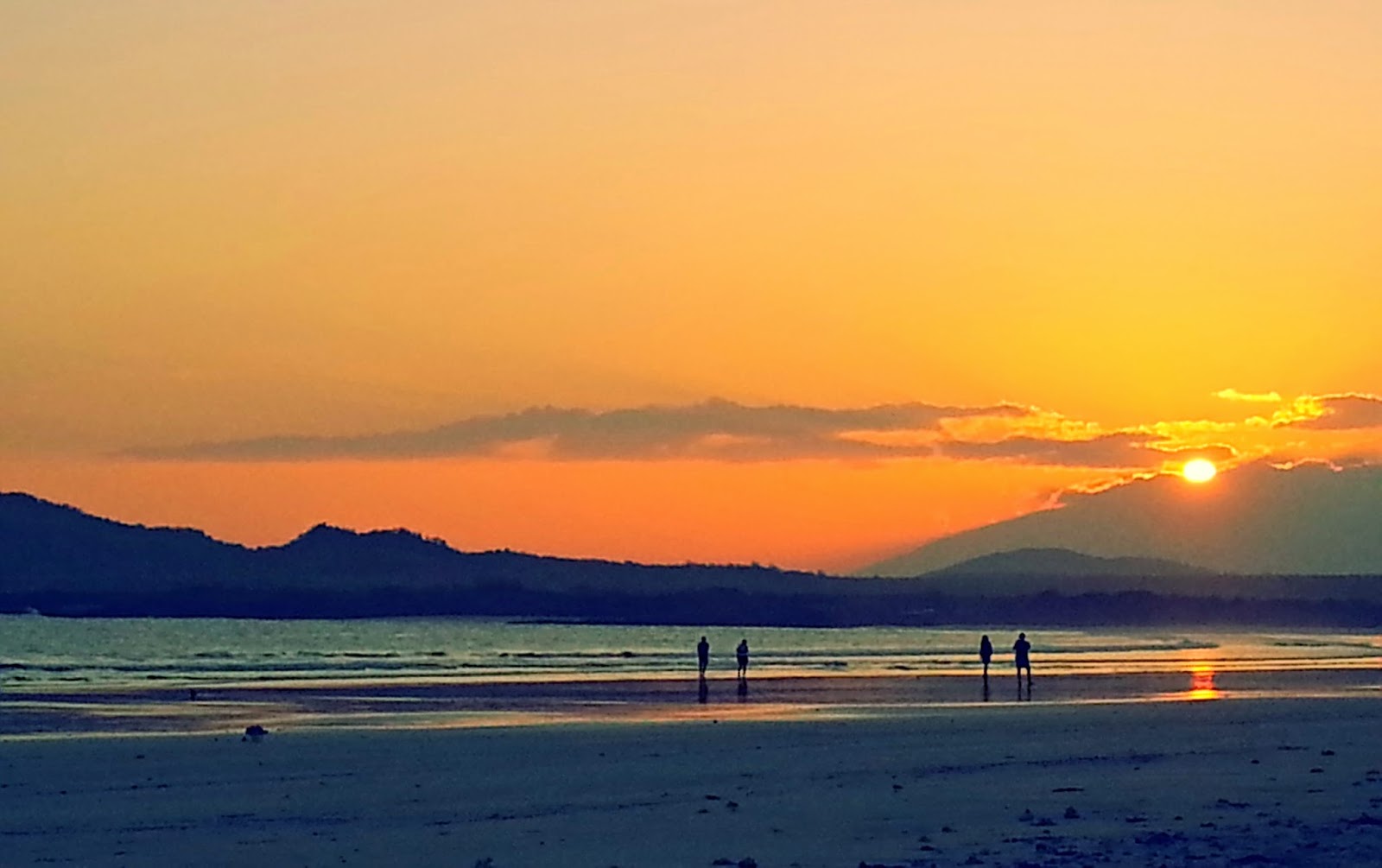 |
| Sunsets on Isabela are the best |
